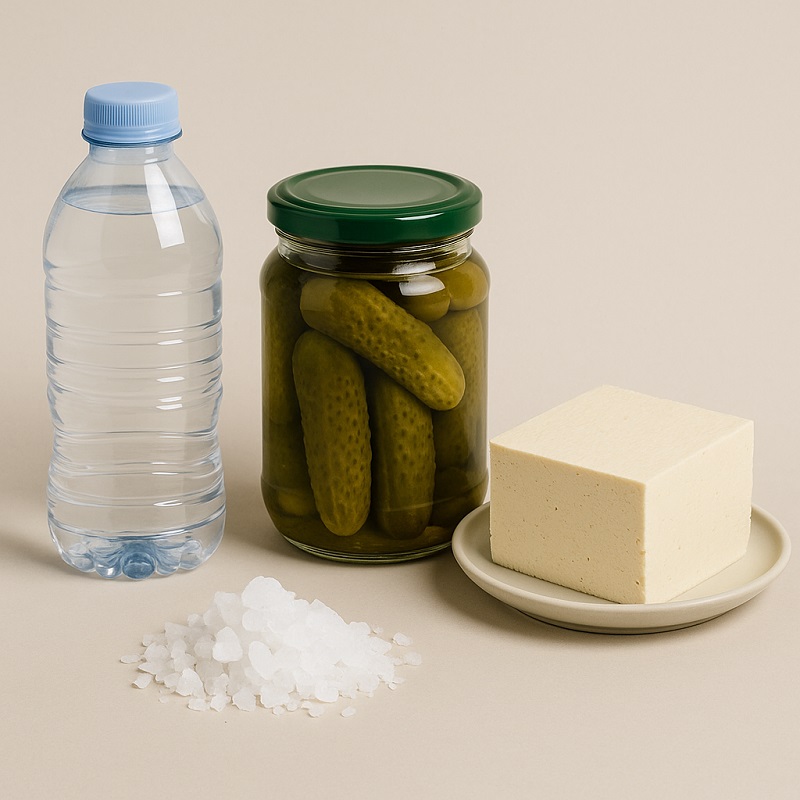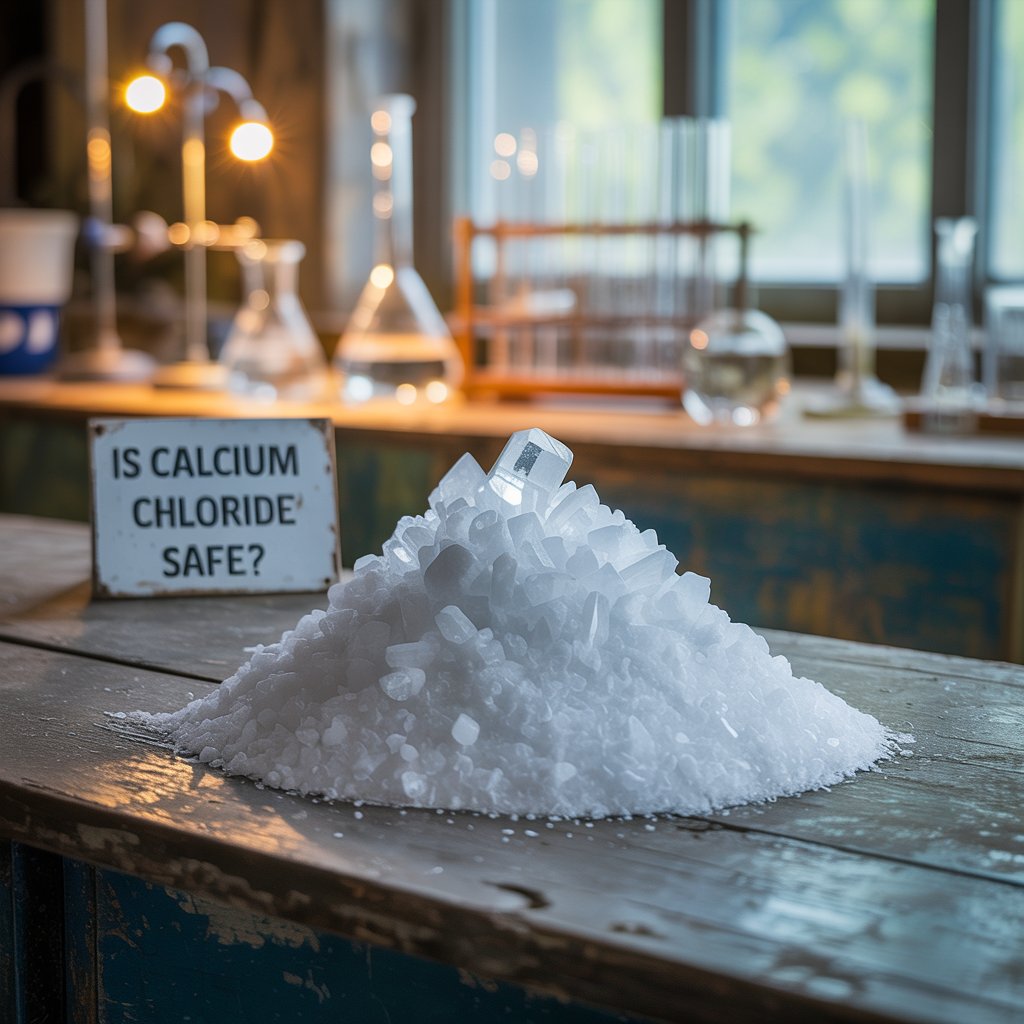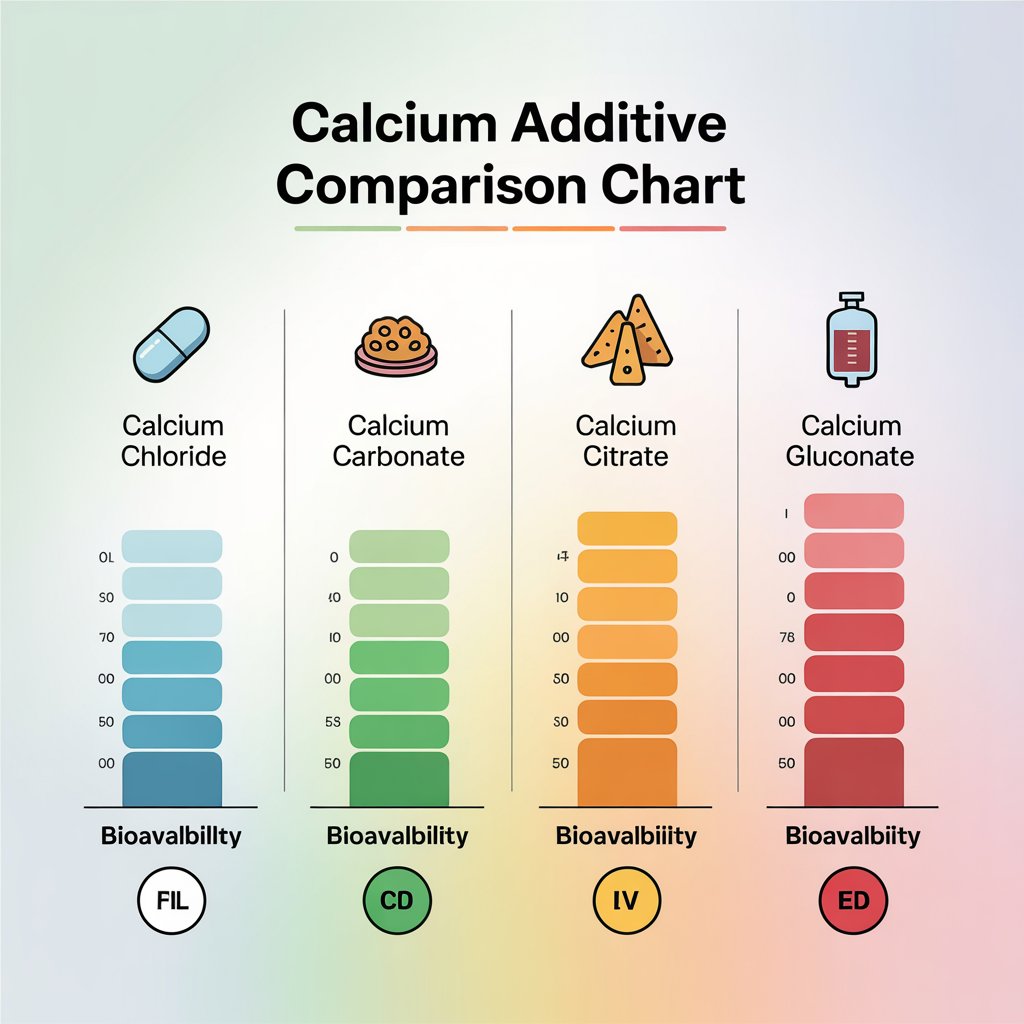Quick Answer: Calcium chloride is generally safe in food, water, and medical use when regulated and consumed in moderation. The real concern lies in overexposure or using industrial-grade versions.
You may have seen calcium chloride listed on the label of your favorite bottled water, pickles, or even in your IV bag during a hospital visit. While it’s widely used across industries—from food to medicine to road de-icing—many health-conscious consumers are left wondering: is calcium chloride safe?
Let’s unpack what calcium chloride really is, how it’s used, and whether it poses any health risks in your food or body care routine. This guide will give you a science-backed perspective, clear up common myths, and help you make informed decisions.
What Is Calcium Chloride?
Calcium chloride (CaCl₂) is a white, crystalline salt composed of calcium and chlorine. It’s highly soluble in water, making it extremely versatile. It can be naturally derived from limestone or created synthetically as a byproduct of other chemical processes like the Solvay process.
In commercial and household products, it’s used in multiple forms: anhydrous powder, liquid solution, or pellets.

Common Uses in Everyday Life:
- Food additive (firming agent, electrolyte source)
- Medical applications (IV therapy, emergency heart treatments)
- De-icing salt for roads and sidewalks
- Moisture control in packaging (desiccant)
Why Is Calcium Chloride Used in Food?
In the food industry, calcium chloride is an FDA-approved additive, often found in processed or packaged goods.
Texture and Freshness
As a firming agent, calcium chloride helps keep vegetables—like canned beans or pickles—crisp and intact during storage. It prevents mushiness and degradation by stabilizing pectin structures in plant cell walls.
Electrolyte Booster
It’s used in sports drinks, bottled waters, and nutritional supplements to replace lost electrolytes like calcium and sodium. It’s often favored for its bioavailability—how easily your body can absorb it.
Flavor Enhancer and Preservative
In tofu manufacturing, it acts as a coagulant. In cheese and brewing, it modifies water chemistry. It even helps prevent spoilage by controlling acidity and microbial growth.
Is Calcium Chloride Safe to Eat?
What Studies Say
According to the World Health Organization (WHO) and European Food Safety Authority (EFSA), calcium chloride has low toxicity when ingested in moderate amounts. A 2021 review in the Journal of Food Science confirmed that food-grade calcium chloride breaks down safely into calcium and chloride ions in the body.
It has an LD50 (lethal dose for 50% of subjects) in rats of around 1000 mg/kg, suggesting it’s not harmful at the levels used in food.
✅ Regulatory Approval
| Regulatory Body | Verdict | Notes |
| FDA (USA) | GRAS | Generally Recognized As Safe for food use |
| EFSA (EU) | Approved | Evaluated for safety, purity, dosage |
| Health Canada | Approved | Limited use, especially in infant products |
Are There Side Effects of Consuming Calcium Chloride?
Yes—but only in very high doses, which are uncommon in a normal diet.
Possible Side Effects (Uncommon):
- Gastrointestinal upset (nausea, bloating, diarrhea)
- Metallic or bitter taste
- Increased calcium levels in people with kidney disease
The typical concentration in food is far below the danger threshold. However, people with sodium sensitivity or renal conditions should consult a doctor before consuming high-electrolyte products.
Is Calcium Chloride Safe for Your Body?
Besides food, calcium chloride is used in medical treatments and topical products. But how safe is it in those contexts?
Medical Uses
- Administered via IV in life-threatening conditions like severe calcium deficiency, cardiac arrest, or magnesium overdose.
- Helps stabilize heart rhythm and restore electrolyte balance.
According to PubChem and the National Institutes of Health (NIH), when used under medical supervision, it is safe and effective.
⚠️ Exposure Risks
- Industrial-grade calcium chloride is highly concentrated and can cause skin and eye irritation.
- Inhalation of powdered calcium chloride in large amounts may irritate the lungs.
Bottom line: For general consumers, food-grade and medical-grade forms are safe, while industrial use requires precautions.
Is Calcium Chloride Safe in Drinking Water?
Yes, calcium chloride is often added to both tap water and bottled water to enhance mineral content and improve taste.
How Much Is Too Much?
- The EPA (Environmental Protection Agency) and WHO recommend calcium levels in drinking water remain under 200–250 mg/L.
- Most bottled waters with calcium chloride contain under 50 mg/L, well within safe limits.
Could It Cause Hard Water Issues?
Technically, yes—high calcium levels contribute to hard water. But in most treated systems, calcium chloride levels are carefully controlled to prevent any impact on appliances or taste.
Is Calcium Chloride Safe for Kids, Pets, and During Pregnancy?
Children:
- Safe when consumed in normal dietary levels (e.g., fortified foods, bottled water).
- Avoid direct ingestion of concentrated forms (tablets or powders not designed for children).
Pets:
- Small traces in water or food are generally harmless.
- Large amounts (e.g., spilled de-icing pellets) can be toxic if ingested. Symptoms may include vomiting or paw burns.
Pregnancy:
- Calcium needs increase during pregnancy.
- Moderate intake through fortified foods or electrolyte drinks is safe, but over-supplementation should be avoided.
Always consult a pediatrician or vet if unsure.
Clean Eating & Labeling: Is Calcium Chloride “Natural”?
This is where things get a little murky.
Is It Natural?
- Calcium chloride can occur naturally, but most food-grade versions are industrial byproducts.
- Despite its inorganic origin, it doesn’t contain artificial preservatives, dyes, or allergens.
Clean Label Debate
- Some clean-label advocates consider calcium chloride a “chemical-sounding” additive, even though it’s not harmful.
- Others view it as safer than synthetic stabilizers or preservatives.
Safer Alternatives?
- For DIY recipes, you can use sea salt, lemon juice, or vinegar to achieve similar flavor or firmness without using additives.
What Is Food-Grade vs. Industrial-Grade Calcium Chloride?
This distinction matters.
- Food-grade calcium chloride is highly purified and regulated for use in edible products. It’s tested for heavy metals, microbial contamination, and other impurities.
- Industrial-grade calcium chloride is used in concrete mixing, road de-icing, and dust control. It’s not meant for human consumption and may contain harmful contaminants.
Tip: Always check for certifications like USP (United States Pharmacopeia) or FCC (Food Chemicals Codex) if you’re purchasing calcium chloride for cooking or food preservation.
What Do Experts and Agencies Say?
Here’s a quick snapshot of where global health authorities stand:
| Organization | Position |
| FDA (USA) | GRAS (Generally Recognized as Safe) |
| EFSA (EU) | Safe for intended use in food |
| Health Canada | No safety concerns at approved levels |
| WHO | Acceptable in drinking water under 200 mg/L |
| CDC | No known toxicity in dietary exposure |
Dietitian Tip: “For the average person, the amount of calcium chloride in food and drinks poses no risk. The concern is more about transparency and processed food consumption as a whole.”
Calcium Chloride vs. Other Calcium Additives: Which One Is Safer?
For supplement users, not all calcium sources are created equal.
| Additive | Common Use | Bioavailability | Safety Profile |
| Calcium Chloride | Electrolyte, food additive | High | May cause GI upset at high doses |
| Calcium Carbonate | Supplements, antacids | Moderate | Can cause bloating or gas |
| Calcium Citrate | Supplements | High | Easier on digestion |
| Calcium Gluconate | IV and medical use | High | Only used clinically |
Verdict: Calcium chloride has great absorption, but it’s better suited for food use or supervised supplementation.
DIY Tips – Using Calcium Chloride Safely at Home
Calcium chloride can be helpful in several at-home scenarios—but must be used properly.
✅ Food Use:
- Use food-grade calcium chloride when making pickles to retain crispness.
- Add to tofu-making as a coagulant.
Storage & Safety:
- Store in a dry, airtight container.
- Wear gloves if handling large amounts or using industrial-grade pellets.
Moisture Control:
Use it in closets or garages as a desiccant—but keep away from pets and children.
How Scientists Test Calcium Chloride for Safety
Safety isn’t a guess—it’s rigorously tested.
Scientific Safety Methods:
- LD50 tests (lethal dose): Evaluates acute toxicity in animals
- NOAEL tests (No Observed Adverse Effect Level): Defines maximum safe daily intake
- In-vitro digestion models: Simulate how the body processes it
- Regulatory assessments: Agencies like EFSA and FDA regularly reevaluate food additives based on new research
These studies shape global food safety laws and consumer protections.
Global Differences in Regulation: Is It Safe Everywhere?
Yes, but limits and use cases vary across regions.
| Region | Regulation | Notes |
| USA | GRAS (FDA) | No set limit, but usage is monitored |
| EU | E509 (EFSA) | Approved in specific food categories |
| Canada | Listed in Food Additive Table | Use varies by product type |
| Australia | FSANZ approved | Used in cheese, drinks, and more |
Some regions regulate the total calcium content, while others focus on form-specific purity and labeling.
When to Avoid Calcium Chloride
While generally safe, there are times to avoid it:
- ❌ If you have chronic kidney disease
- ❌ If you’re on calcium supplements or heart medications
- ❌ In infants under 6 months, unless medically directed
- ❌ If you’re handling industrial-grade forms without protection
Always opt for food-grade and follow label instructions.
Is Calcium Chloride Safe for the Environment?
In De-Icing:
- When used as road salt, calcium chloride can alter soil pH, harm vegetation, and increase chloride levels in freshwater.
- It’s less corrosive than sodium chloride, but not environmentally benign.
Greener Alternatives:
- Beet juice + brine mixtures
- Potassium acetate blends
- Sand or gravel for traction without melting
If you’re using de-icers at home, look for pet-safe and eco-friendly formulas.
Final Verdict: Should You Avoid Calcium Chloride?
No—at least not blindly.
- In moderation and food-grade form, calcium chloride is safe for most people.
- It serves functional purposes in foods and medical care without known long-term risks at approved levels.
- However, if you’re committed to a clean-label or chemical-free diet, you may prefer to limit its intake and choose whole foods over processed ones.
❓FAQs
Q: Is calcium chloride safe in food?
Yes, it’s approved by FDA and EFSA for use in food as a firming agent or electrolyte source.
Q: Can calcium chloride cause side effects?
Only in large doses. Typical food and drink levels are safe for most people.
Q: Is calcium chloride natural or synthetic?
It can be naturally derived but is often industrially produced for commercial use.
Q: Is calcium chloride safe during pregnancy?
Yes, in moderation. Consult your doctor before supplementing heavily.
Q: Should I worry about it in my bottled water?
No—levels are typically far below the safety limit and may even provide dietary calcium.





